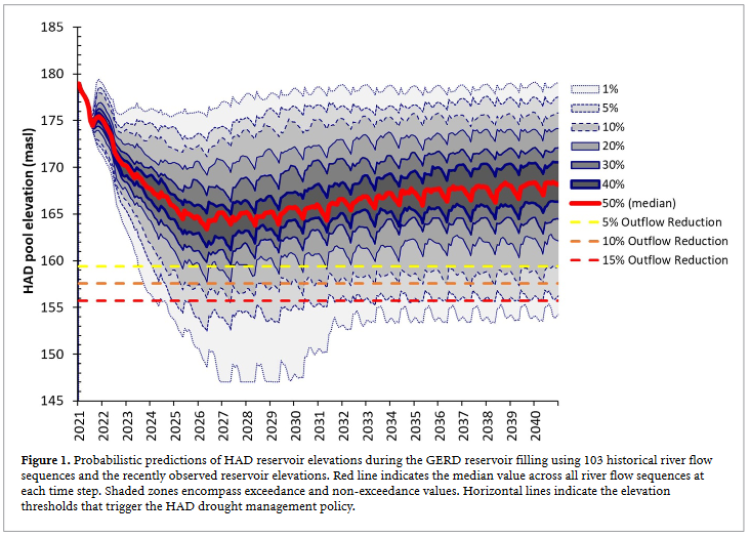Comment on 'Egypt's water budget deficit and suggested mitigation policies for the Grand Ethiopian Renaissance Dam filling scenarios'
Wheeler, K., Jeuland, M., Strzepek, K., Hall, J., Zagona, E., Abdo, G., Basson, T., Blackmore, D., Block, P., & Whittington, D., (2022) Comment on "Egypt's water budget deficit and suggested mitigation policies for the Grand Ethiopian Renaissance Dam filling scenarios," IOP Science, Environmental Research letters, 5 August, 2022 (https://iopscience.iop.org/article/10.1088/1748-9326/ac7e5e).
Abstract:

In their recent paper in ERL, 'Egypt's water budget deficit and suggested mitigation policies for the Grand Ethiopian Renaissance Dam (GERD) filling scenarios,' Heggy et al (2021 Environ. Res. Lett. 16 074022) paint an alarming picture of the water deficits and economic impacts for Egypt that will occur as a consequence of the filling of the GERD. Their median estimate is that filling the GERD will result in a water deficit in Egypt of ∼31 billion m3 yr−1. They estimate that under a rapid filling of the GERD over 3 yr, the Egyptian economy would lose US$51 billion and 4.74 million jobs, such that in 2024, Gross Domestic Product (GDP) per capita would be 6% lower than under a counterfactual without the GERD. These and other numbers in Heggy et al (2021 Environ. Res. Lett. 16 074022) article are inconsistent with the best scientific and economic knowledge of the Nile Basin and are not a dependable source of information for policy-makers or the general public. In this response to Heggy et al (2021 Environ. Res. Lett. 16 074022) we draw on high quality peer-reviewed literature and appropriate modeling methods to identify and analyze many flaws in their article, which include (a) not accounting for the current storage level in the High Aswan Dam reservoir (b) inappropriately using a mass-balance approach that does not account for the Nile's hydrology or how water is managed in Egypt, Sudan and Ethiopia; (c) extreme and unfounded assumptions of reservoir seepage losses from the GERD; and (d) calculations of the economic implications for Egypt during the period of reservoir filling which are based on unfounded assumptions. In contrast to Heggy et al (2021 Environ. Res. Lett. 16 074022), robust scientific analysis has demonstrated that, whilst there is a risk of water shortages in Egypt if a severe drought were to occur at the same time as the GERD reservoir is filling, there is minimal risk of additional water shortages in Egypt during the filling period if flows in the Blue Nile are normal or above average. Moreover, the residual risks could be mitigated by effective and collaborative water management, should a drought occur.'
Keywords: Grand Ethiopian Renaissance Dam, Nile, Egypt, Sudan, Ethiopia, Aswan High Dam Reservoir

